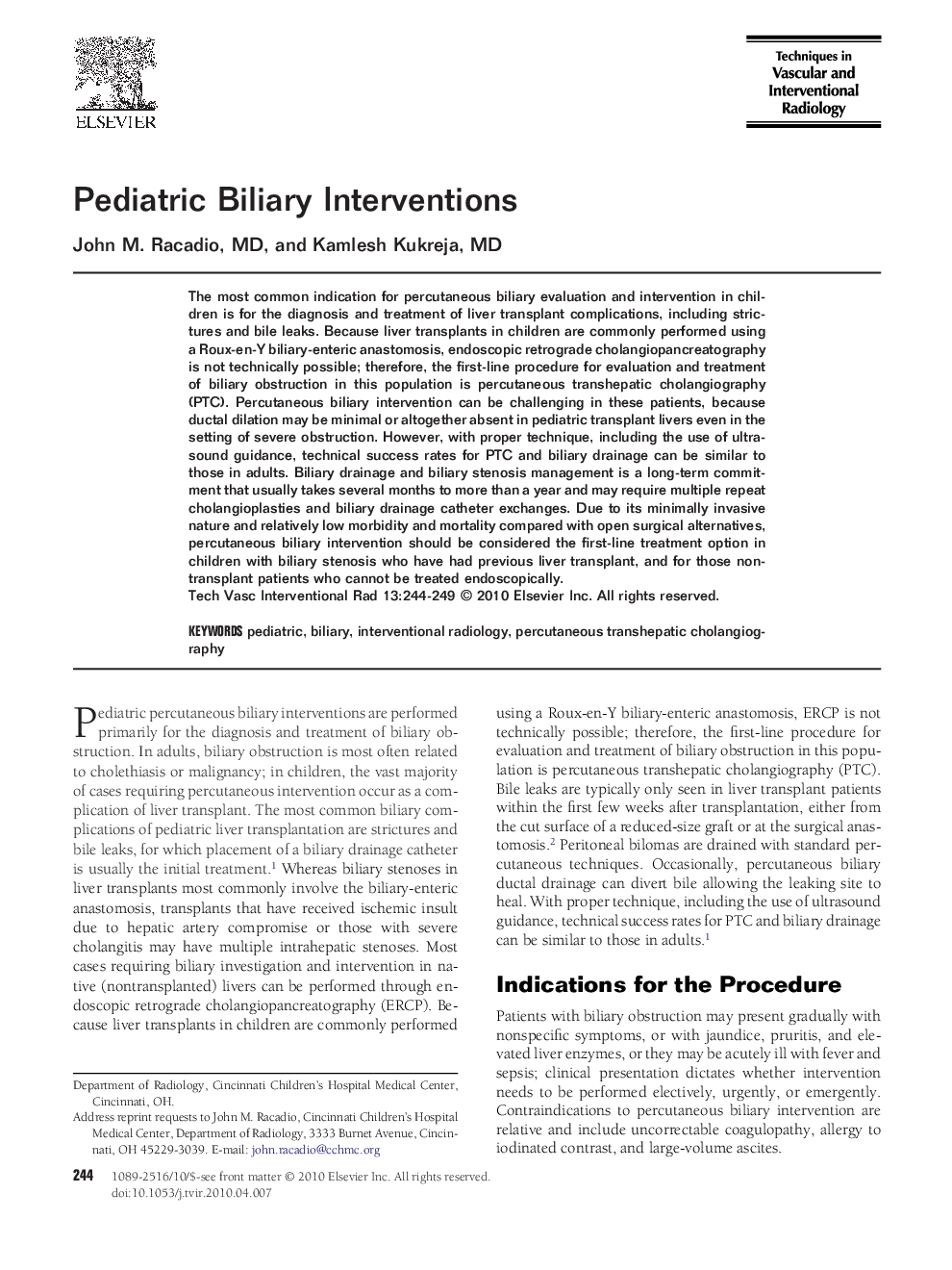| کد مقاله | کد نشریه | سال انتشار | مقاله انگلیسی | نسخه تمام متن |
|---|---|---|---|---|
| 4251780 | 1284154 | 2010 | 6 صفحه PDF | دانلود رایگان |

The most common indication for percutaneous biliary evaluation and intervention in children is for the diagnosis and treatment of liver transplant complications, including strictures and bile leaks. Because liver transplants in children are commonly performed using a Roux-en-Y biliary-enteric anastomosis, endoscopic retrograde cholangiopancreatography is not technically possible; therefore, the first-line procedure for evaluation and treatment of biliary obstruction in this population is percutaneous transhepatic cholangiography (PTC). Percutaneous biliary intervention can be challenging in these patients, because ductal dilation may be minimal or altogether absent in pediatric transplant livers even in the setting of severe obstruction. However, with proper technique, including the use of ultrasound guidance, technical success rates for PTC and biliary drainage can be similar to those in adults. Biliary drainage and biliary stenosis management is a long-term commitment that usually takes several months to more than a year and may require multiple repeat cholangioplasties and biliary drainage catheter exchanges. Due to its minimally invasive nature and relatively low morbidity and mortality compared with open surgical alternatives, percutaneous biliary intervention should be considered the first-line treatment option in children with biliary stenosis who have had previous liver transplant, and for those nontransplant patients who cannot be treated endoscopically.
Journal: Techniques in Vascular and Interventional Radiology - Volume 13, Issue 4, December 2010, Pages 244–249